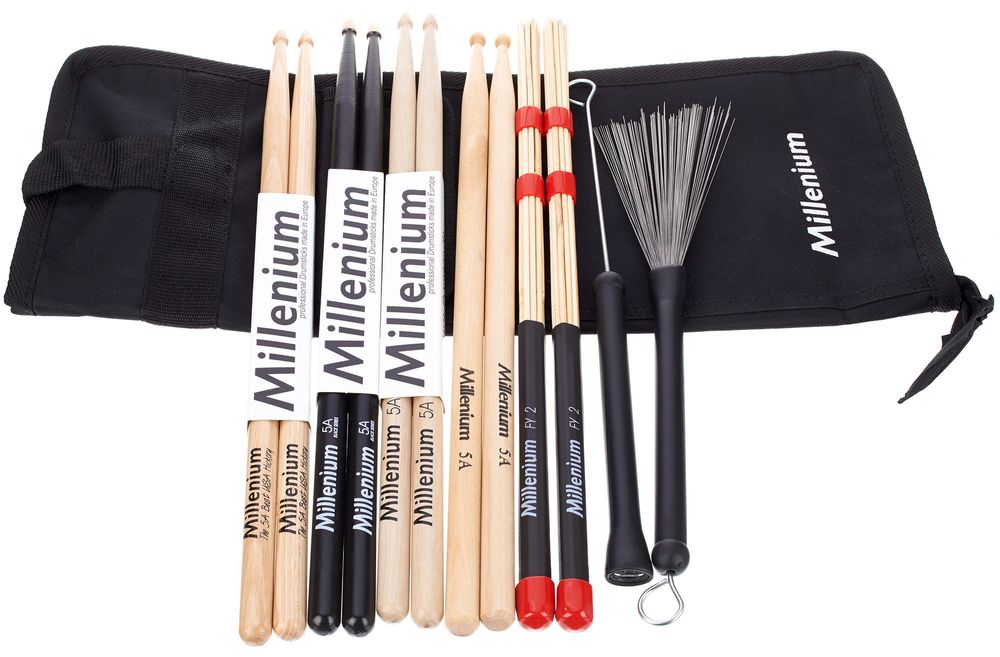6. Stick Choice
When playing the snare drum in a rudimental context, larger stick sizes are common though they differ from style to style. Scottish pipe band drummers generally use large diameter yet lightweight maple sticks. Their style uses a lot of buzz rolls and lighter dynamics so they use more wrist and finger technique that makes the most of their unique drums rebound. On this drum a lighter stick is easier to manipulate. North American D.C.I. (Drum Corps International) drummers tend to use heavier hickory sticks that produce a lot of volume, because their style relies on more double-stroke rudiments created by playing into the head using the wrist, arms and fingers.
For jazz, lighter sticks are often chosen for their more delicate cymbal sound, lower volume and quick rebound off a cymbal. Rock drummers often use heavier sticks that produce more volume but tend to be harder to move quickly.
Among the types of drumsticks available for drum kit use are those with nylon tips, which produce a bright cymbal sound with lots of attack and usually have more durability. Wood tips produce a softer, warmer tone with less attack but the tips can wear away. The two types are indistinguishable from each other when played on a snare drum or tom-toms. Because of this, kit drummers often choose their type of stick tip based on their desired cymbals sound. Jazz drummers usually prefer wood-tipped sticks for their warmer sound.
While there are no hard and fast rules, beginners are often directed to play 5A Hickory sticks with an oval-shaped tip.
Tip: Checking the quality of Drumsticks!
Most drumsticks manufactured today are of much higher quality those made a few decades ago. Some manufacturers weigh the sticks and sell them as matched pairs. Sometimes these pairs get separated so its a good idea to know how to check out a pair of sticks. When evaluating a pair of sticks, check to see if they feel the same in each hand. Listen to the sound produced when playing a practice pad or other hard surface, but not a drum since this can obscure the tone of the stick. Some drummers will lightly tap their heads with the sticks because its an easy way to hear their pitch, but be forewarned: this is a good way to get some strange looks at the music store! If the tone of each is similar the wood of each stick should have similar density. The last test is to roll each stick on a flat surface to check for warped sticks. Dont accept any bananas!



